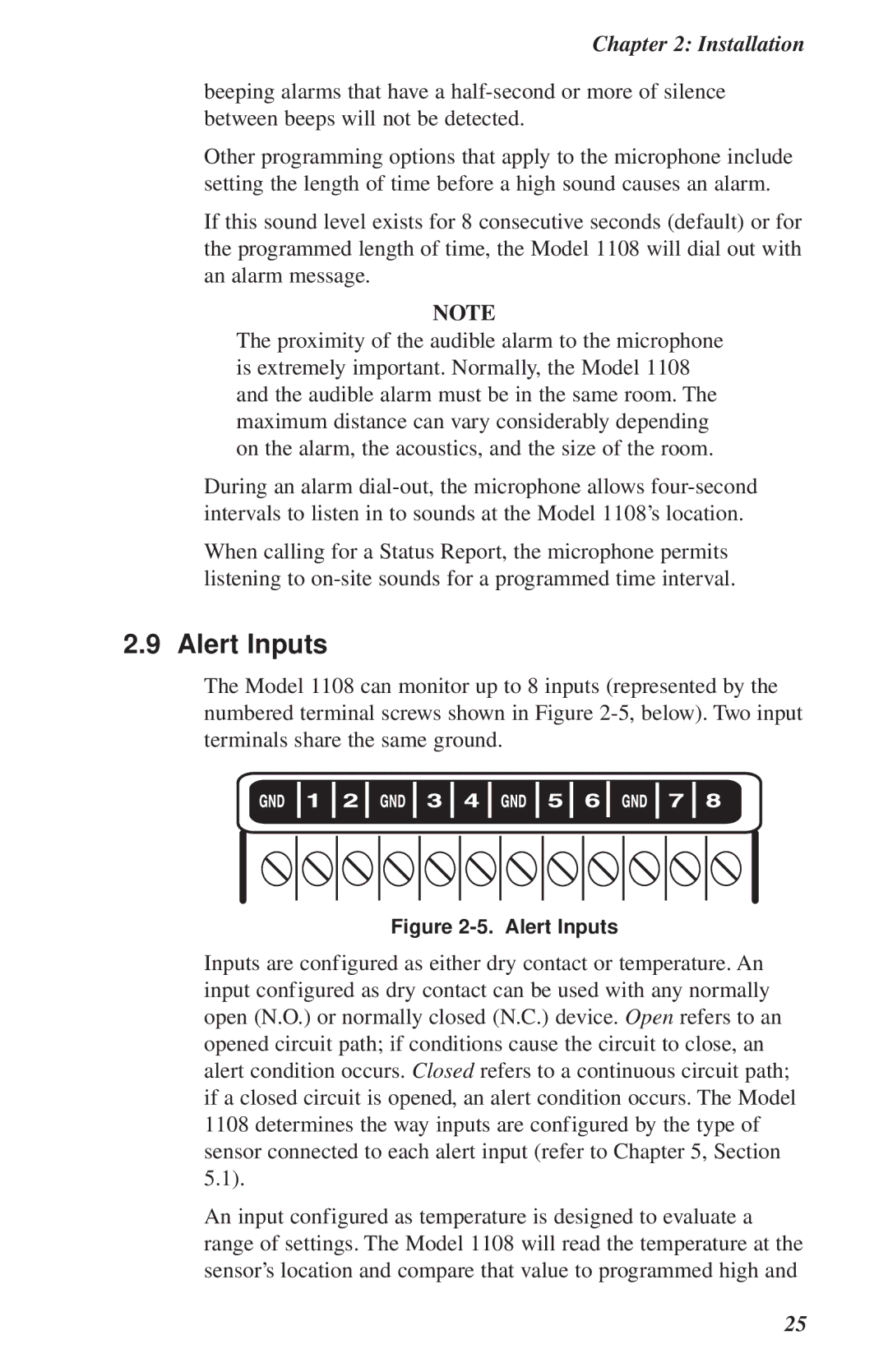
Chapter 2: Installation
beeping alarms that have a
Other programming options that apply to the microphone include setting the length of time before a high sound causes an alarm.
If this sound level exists for 8 consecutive seconds (default) or for the programmed length of time, the Model 1108 will dial out with an alarm message.
NOTE
The proximity of the audible alarm to the microphone is extremely important. Normally, the Model 1108 and the audible alarm must be in the same room. The maximum distance can vary considerably depending on the alarm, the acoustics, and the size of the room.
During an alarm
When calling for a Status Report, the microphone permits listening to
2.9 Alert Inputs
The Model 1108 can monitor up to 8 inputs (represented by the numbered terminal screws shown in Figure
Figure 2-5. Alert Inputs
Inputs are configured as either dry contact or temperature. An input configured as dry contact can be used with any normally open (N.O.) or normally closed (N.C.) device. Open refers to an opened circuit path; if conditions cause the circuit to close, an alert condition occurs. Closed refers to a continuous circuit path; if a closed circuit is opened, an alert condition occurs. The Model 1108 determines the way inputs are configured by the type of sensor connected to each alert input (refer to Chapter 5, Section 5.1).
An input configured as temperature is designed to evaluate a range of settings. The Model 1108 will read the temperature at the sensor’s location and compare that value to programmed high and
25
